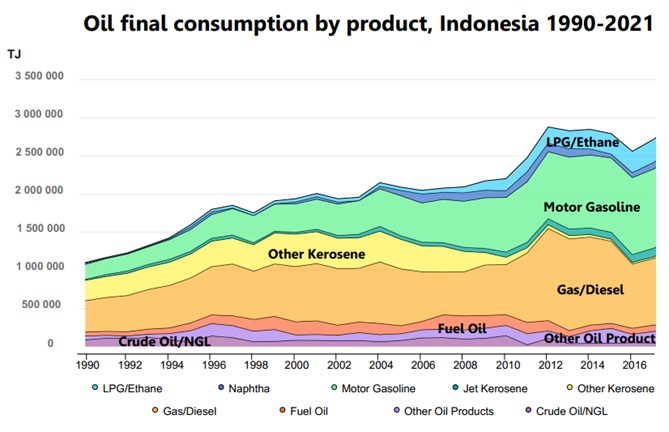by Analyzing Historical Databases using AI
Tools & EVM Techniques
FEATURED PAPER
By Rizkia Arifani Zain
Jakarta, Indonesia
ABSTRACT
The growth in energy demand, particularly in the oil & gas sector, influences investment decisions for jetty development to enhance supply capacity. The Dolphin Jetty, a prevalent type used by the National Oil Company, incorporates cylindrical or pile-like structures called dolphins to guide and moor vessels safely. As energy consumption in Indonesia shows a consistent upward trend, optimizing the supply chain and fuel distribution becomes imperative. In this context, maritime transportation, specifically through dolphin jetties, emerges as a strategic choice to efficiently meet fuel distribution needs. This paper emphasizes the importance of preparing Capital Expenditure (CAPEX) documentation in the feasibility studies stage, influencing the economic value of the investment. The paper uses historical data to introduce a parametric modeling approach for Dolphin-configured jetties, considering variations in mooring capacity, dead weight tonnage (DWT), and estimated construction implementation years. The outcomes aim to inform the CAPEX Class 4 preparation, contributing valuable insights for the economic assessment of jetty construction projects.
Keywords: Cost Estimate, Parametric Model, Estimation, AACE, Mooring Dolphin, Jetty, Pier, WBS, CAPEX, OmniClass, Construction, @RISK, National Oil Company, Artificial Intelligence, Econometrics, Data Analysis.
INTRODUCTION
National Oil Company Mooring Profile
Tanker is crucial in distributing refined fuel to end customers throughout Indonesia. The fuel distribution in Indonesia, with its more than 17,000 islands, relies heavily on tanker transportation as its primary mode of transportation. Consequently, facilities such as jetties play a significant role in the supply and distribution chain, where the continual improvement and construction of jetties are undertaken to enhance the reliability of the supply across Indonesia. The growth in energy demand, especially in oil & gas, significantly influences the investment decisions for Jetty development to enhance supply capacity and coverage days.
According to the Oil final consumption by-product data for Indonesia from 1990 to 2021[1], the energy consumption in Indonesia shows an upward trend each year.

Figure 1-Oil final consumption by product, Indonesia 1990-2021
Furthermore, the jetties owned by the National Oil Company have a considerably long construction lifespan. The data on the Percentage of Mooring Facilities of Various Ages is evident, where the dominance of jetties with ages exceeding 30 years.[2] Consequently, the need for Jetty Development becomes a frequent investment activity to enhance infrastructure reliability and ensure supply security.
More…
To read entire paper, click here
Editor’s note: This paper was originally prepared during a 6-month long Graduate-Level Competency Development/Capacity Building Program developed by PT Mitrata Citragraha and led by Dr. Paul D. Giammalvo to prepare candidates for AACE CCP or other Certifications. https://build-project-management-competency.com/our-faqs/
How to cite this paper: Zain, R. A. (2024). Developing Parametric Modelling for Class 4 Estimate of Pier and Jetty Construction by Analyzing Historical Databases using AI Tools & EVM Techniques; PM World Journal, Vol. XIII, Issue IV, April. Available online at https://pmworldlibrary.net/wp-content/uploads/2024/04/pmwj140-Apr2024-Zain-Parametric-Modelling-for-Class-4-Estimate-of-Pier-and-Jetty-Construction.pdf
About the Author

Rizkia Arifani Zain
Jakarta, Indonesia
![]()
Rizkia Arifani Zain is an engineer with seven years of professional experience in the oil and gas sectors. Currently, he works as a cost engineer at the national oil company of Indonesia. Several projects have been completed, such as offshore pipeline & fixed platform EPCI project, fuel terminal project, fuel terminal jetty, SPM/CBM, and other downstream projects. He holds a bachelor’s degree in mechanical engineering from Bandung Institute of Technology (ITB). He is attending a distance learning mentoring course, under the tutelage of Dr. Paul D. Giammalvo, CDT, CCE, MScPM, MRICS, GPM-m Senior Technical Advisor, PT Mitrata Citragraha, to attain Certified Cost Professional certification from AACE International.
Rizkia Arifani Zain resides in Jakarta, Indonesia, and his email address is rizkia.arifani.z@gmail.com
[1] Oil final consumption by product, Indonesia 1990-2021. (2016). Indonesia – Countries & Regions – IEA. IEA. https://www.iea.org/countries/Indonesia
[2] Pertamina. (2021). Infrastructure Masterplan: Strategic Roadmap of Synergy Optimization.









